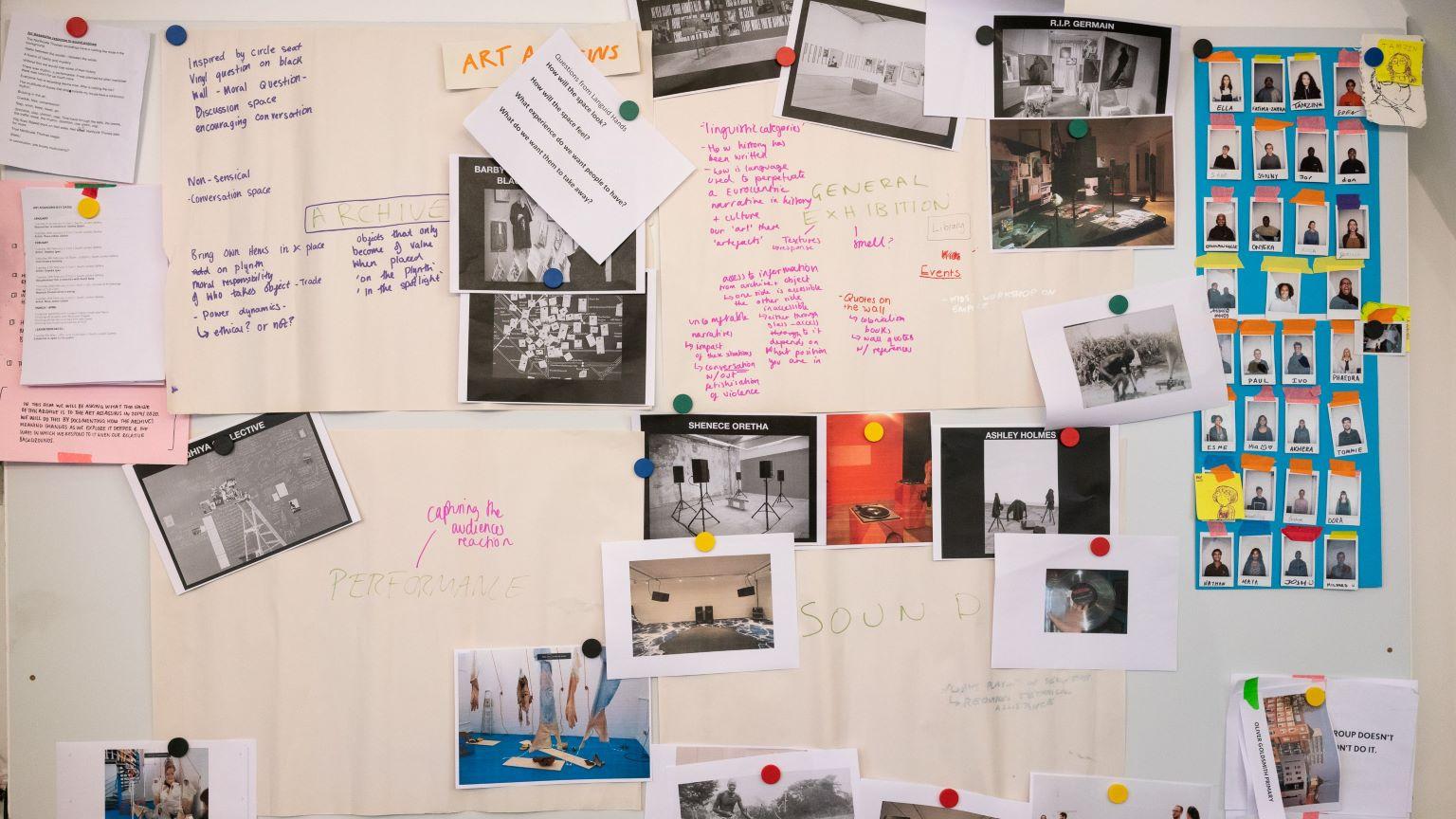Winners’ tales: How South London Gallery’s young ‘Art Assassins’ work with artists

Concluding our series of posts from our five Museum of the Year winners, South London Gallery’s Paul Crook tells us how the gallery’s young people’s group have been engaging in complex conversations about heritage and history.
As Young People’s Programme Manager at the South London Gallery (SLG) I work with my colleague Tommie Introna to run the gallery’s young people’s group, the Art Assassins. The group is made up young people aged 14-21 from across south London who meet weekly at the gallery to collaborate on projects with artists, curators and other professionals.
In the past 10 years over 200 young people have been members of Art Assassins, many participating over a number of years. Today we have 30 members who regularly attend sessions. Art Assassins is a space for young people to learn, have fun and develop their creative skills and interests.
In our most recent project Entanglements: Who Makes History?, Art Assassins have been collaborating with artists and researchers to interrogate the archive of anthropologist Northcote W Thomas. Working for the British colonial office, Thomas conducted several surveys in Nigeria and Sierra Leone between 1909-15, amassing a huge collection of objects, sound recordings and photographs. The project is an opportunity to explore colonial history often neglected in the school curriculum, empowering young people with tools to research and critically analyse historical archives. The themes of the project challenged us to have conversations with young people about difficult histories and navigate sensitive ethical debates, guided by the questions: ‘Can the archive be decolonised?’ and ‘What is the value of the archive to young people today?’
Working with artists and researchers
The artist collaborators along with researchers from across our project partners SOAS, UCL and Igbo Studies Initiative have really helped Art Assassins unpick these fraught histories. In workshops with artist Onyeka Igwe, listening to the digitised wax cylinder recordings made by Thomas prompted conversations about how a community is represented sonically. The group then created sound recordings of their own lives thinking about how a young person from south London today might be understood in 100 years. The group have been learning conservation skills with the UCL Institute of Archaeology, and their project with artist Rosa-Johan Uddoh provided a counterpoint to traditional museum practices, imagining objects from the collection cast into new speculative narratives.
All these strands have sought to engage the Art Assassins in complex conversations about heritage and history within a supportive environment. This is an ongoing challenge as we find ways to create a safe and non-judgmental space for the group to articulate their concerns or ideas, and build confidence as part of a shared journey. With our researchers-in-residence Emmanuelle Andrews and Emma Dabiri, we have had frank conversations helping the Art Assassins think through how they relate to colonial legacies in our everyday.
Creating an exhibition
We have now reached a stage in the project where we are working with the Art Assassins to bring all the strands of the project together in a display at the SLG. Our challenge is to instigate a collaborative curatorial process whereby everyone feels a sense of ownership. In a recent workshop, we asked the Art Assassins to consider ‘What is our exhibition trying to do?’ and to write their responses onto post-it notes. We stuck them all on the studio wall and were confronted with the messy vitality of many different voices. Together we managed to group these responses into three categories: Entertain/Engage; Challenge/Inform/Educate; Showcase/Reflect/Process. This process was not without conflict: some members of the group feel we should exclude the original archive from the exhibition so as not to platform colonial history. Others think it is important to present our references to visitors so that they can decide for themselves.
We ultimately decided to incorporate multiple viewpoints within the curation of the show, recognising dialogue as one of the strengths of the project. Working with a group of diverse ages and backgrounds, the difficult histories being unpacked in this project have at moments cohered and divided the group at the same time. Initially, the majority of the group were unaware of Britain’s colonial history but now, with the Black Lives Matter protests and other campaigns for racial justice, this history has been pushed into young people’s everyday lives. Entanglements: Who Makes History is helping to equip the Art Assassins with confidence to respond to these events from a position of increased knowledge. Crucially, this learning happens in a space that allows young people to engage in processes of dialogue, conflict and compromise alongside peers and supportive professionals.
Entanglements is led by the Art Assassins working with SOAS University of London, Autograph, Igbo Studies Initiative, University of Cambridge Museum of Archaeology and Anthropology, British Library and the UCL Institute of Archaeology. It is one of several innovative, collaborative partnerships initiated in 2019 for which the SLG has been recognised by Art Fund as Museum of the Year. The SLG’s Young People’s Programme is supported by the National Lottery Heritage Fund, Oscar Humphries and Sophie Oakley and the SLG Council.
South London Gallery is a winner of Art Fund Museum of the Year 2020. Learn more about our five brilliant winners.
Pictured top: Art Assassins exhibition planning. Photo: Sam Nightingale